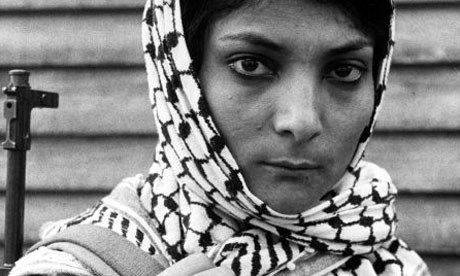I'm still slogging away, when I can, on the MESA paper, and am finding ever more material.
Here's another photo of Chris Brown, which I found courtesy of the blog
Flypaper, dated February 26, 2008. Here is an
earlier post of mine of Chris B. You learn from these photos that he owns more than one.

Flypaper
posted the Brown photo again, along with a shot of Beyoncé in a turban (original is from
here),

and some hijab fashion,

under the title "Middle Eastern chic" (April 29, 2008). Symptomatically, not "Arab" chic. As Sunaina Maira notes in her article on Belly Dancing and Arab-Face, “Despite the recent proliferation of belly dance classes and clothing, hookah bars, and Arab music in urban U.S. popular culture, the word 'Arab' is hardly ever used in connection with these products and practices, and they are more commonly glossed as 'Middle Eastern.'” (Check out wayneandwax's post on Arab-Face
here and download Maira's article
here.)
Arab seemingly is too dangerous an identification to market, or blog. Nonetheless, I appreciate Flypaper's move to link the kufiya trend to other clothing trends. (I posted previously about turban style and hijab chic
here. J-Lo and Prince beat Beyoncé to the punch.)

Here is a shot of Cameron Diaz, kufiya draped, appearing at
Pangea Day in May, courtesy
Popsugar. Pangea Day is a "global event bringing the world together through film, which on May 10, 2008, linked live events in Cairo, Kigali, London, Los Angeles, Mumbai, and Rio de Janeiro. It was initiated by Jehane Noujaim, director of Control Room (the documentary about Al-Jazeera). Check out the
excerpts from the films that were shown--this is not just some flaky, ignorant Hollywood stuff that Cameron is participating. (And what about the fact that she wears a kufiya to an international event organized by an Egyptian?)
And back to Flypaper: the next post following the one on "Middle Eastern chic" is one about the "new Pashmina," as reported on by the
London Times (April 26), which writes, " Except there’s a new way to wear scarves that’s almost universally foolproof – not knotted in a neat choker that ends up slipping round your neck, but folded into a big triangle at the front and tied, Middle-Eastern style. This is a cunningly brilliant route to prints and colours you wouldn’t otherwise be seen dead in, but know will cut a dash." Note, again: not folded Palestinian style or Arab style but Middle Eastern style.

Flypaper, helpfully, provides a photo of this triangle-in-front style, which the
Times does not do. (Pashmina is a very pricey type of cashmere shawl, from the Kashmir, that became popular in the West of late. Maira writes that they showed up in clothing stores and street fairs in New York City in 1997-99, as part of the Indo-chic trend (p. 345, "Henna and Hip-Hop: The Politics of Cultural Production and the Work of Cultural Studies,"
Journal of Asian American Studies, October 2000).
More recently,
RunwayDaily.com reported (August 18, 2008) on the first look at the "killer scarves" for fall 2008, and, whaddyaknow, the "triangle in front" (here labelled "triangle wrap") shows up again:
"Scarves were even seen wrapped tightly around the neck, in a fringed belted version and also in a triangular look that resembles the
VERY CONTROVERSIAL keffiyeh (that I love to don)."
The controversy RunwayDaily.com refers to is, of course, the Rachael Ray/Dunkin' Donuts one. Note that the scarf and cap on the lower right (shoulder love) have a kufiya-looking pattern. And is the "head's covered" scarf more "hijab chic"?
That's not the end of it, for the post features more scarves, including the Peace Treaty line. Pictured is the Capsicum Peace Treaty scarf (shades of Urban Outfitters'
"anti-war woven scarf").

And if you go to the
website (shopbop.com) you can find "triangle wrap," kufiya-style scarves, including this one, the Netanya.

And there's more to the kufiya/pashmina connection, or merger.
Bluefly is also marketing a red, cashmere kufiya (only $99, on sale), as part of its Kashmere line.

Finally (for now), you can buy the trompe l'oeil kufiya t-shirt now from
fredflare.com.

As Fredflare says, "Unless you've been living under a rock somewhere, you've seen (or worn) this ubiquitous scarf. Now you can rock it all year long on a super comfy 100% cotton t-shirt by Newbreed Girl!" The kufiya is no longer just for fall/winter! (But see this earlier trompe l'oeil
here.)
Apparently, kufiyas aren't going away any time soon. The "triangle" style of wearing them is getting, almost, branded. They are getting merged with Indo-chic pashminas. Viral...
Nor, I would maintain, does the fact that celebrities wear them necessarily mean that kufiyas are disconnected from progressive, or at least humanitarian, politics. Check out Pangea.
 The current scene of bombed-out neighborhoods in the Gaza Strip resembles the destruction Israel wrought in Lebanon during the summer of 2006. (Hatem Omar/MaanImages)
The current scene of bombed-out neighborhoods in the Gaza Strip resembles the destruction Israel wrought in Lebanon during the summer of 2006. (Hatem Omar/MaanImages)





































